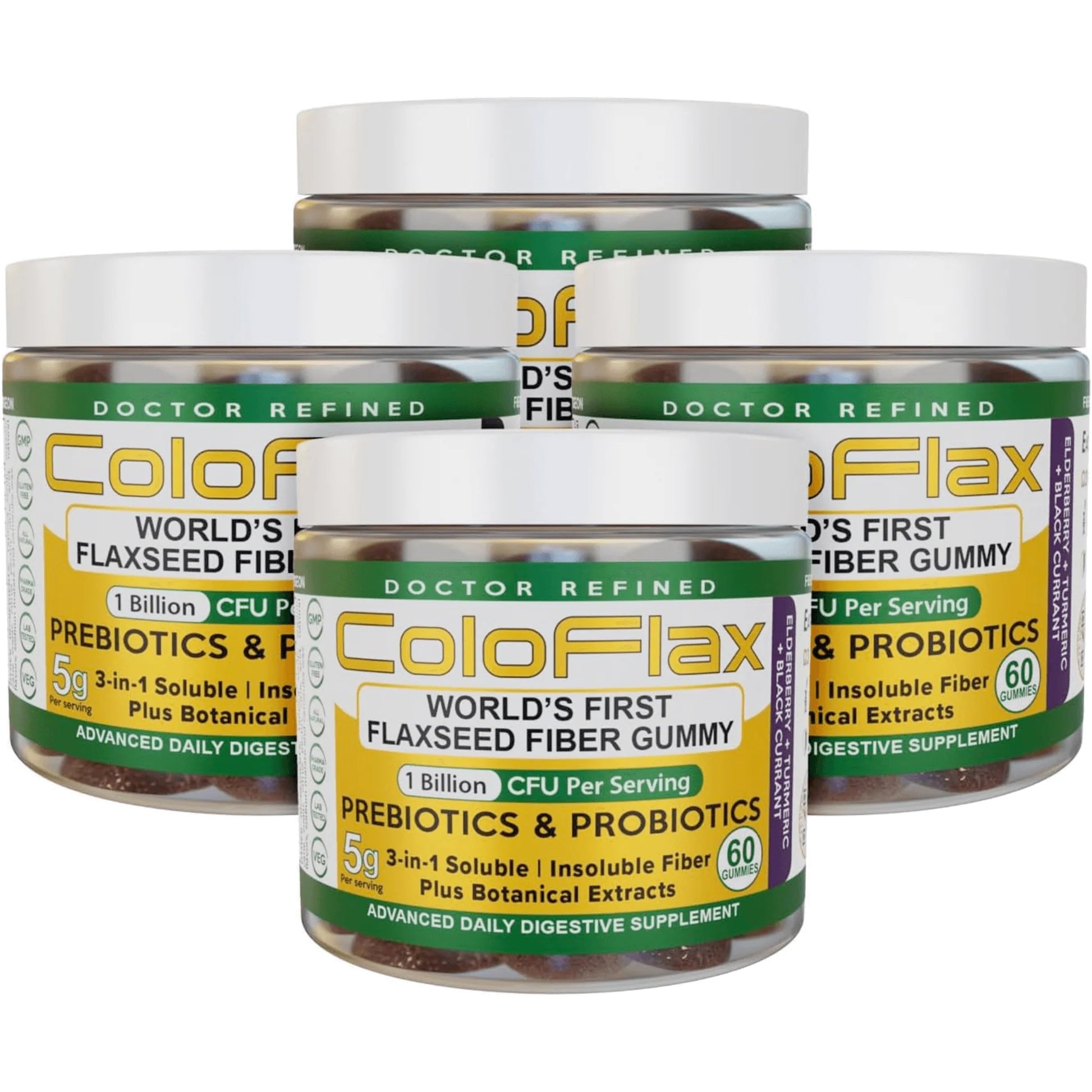Black currants (also spelled “blackcurrants”) are somewhat of a forbidden fruit in the United States, and that’s a shame, as we have been deprived of their amazing flavors and potential health benefits.
There’s a lot about these fruits that you don’t know; a lot of things that will impress and amaze you. In the following guide, we’ll tell you all about them.
You might not know much about black currants now, but you’ll be an expert by the end of this guide.
What are the Health Benefits of Black Currants?
The black currant plant (Ribes nigrum) is a shrub that produces sweet purple berries. These berries are loaded with nutrients and antioxidants that could play a variety of supportive roles in the body, assisting with everything from skin and digestive health to cardiovascular health and more.
When consumed as part of a healthy diet, they could reduce the risk of an array of conditions and promote good health and well-being.
It’s important to note, however, that black currants and black currant extracts have not been approved to treat any medical conditions.
Still, all of the following benefits are based on clinical studies, and while more research is needed to draw concrete conclusions, they make for fascinating reading.
They are High in Antioxidants
The distinctive purple color of black currants is produced by compounds known as anthocyanins, which can also be found in other blue, purple, black, and red fruits/vegetables.
These compounds have a strong antioxidant effect and have been studied extensively for their potential health benefits. (1)
The main benefit concerns the compound’s ability to reduce oxidative stress, which is linked to an array of health problems and chronic conditions.
Black currants are also a good source of vitamin C, another antioxidant compound. In fact, on a gram-for-gram basis, there is four times more vitamin C in black currants than there is in oranges.
Consuming a whole-food diet that is naturally rich in antioxidants supports the body in its fight against inflammation. Black currants are on the frontline of that fight.
Black Currant Seeds Contain GLA and ALA
Black currant seeds are a great source of gamma-linolenic acid (GLA), an essential fatty acid that supports overall health and wellness. They also contain alpha-linolenic acid (ALA).
These omega-6 and omega-3 fatty acids have been shown to help with diabetes and joint health. They can also support digestion and cardiovascular health. (2)(3)
There are better sources of omega-3 out there, but many of them are animal-based, including salmon, mackerel, and trout. If you follow a vegetarian or vegan diet, or you’re just not a fan of fish, black currant seeds are the perfect plant-based way to boost your intake of essential fatty acids.
They are High in Fiber
Black currants contain around 70 calories per cup, and a whopping 8g of that is fiber. Only 5% of Americans get enough fiber, even though high-fiber diets have been linked with everything from reduced rates of heart attacks and strokes to improved digestive health. (4)
By adding a single cup of black currants to your diet, you will consume more than a quarter of your daily recommended intake of fiber. Add some fresh vegetables to the mix, throw in a couple of servings of fruit, and you’ll hit the recommended 30g milestone.
Still struggling to meet your fiber needs? Want to give your digestive health a boost? Check out ColoFlax flaxseed fiber gummies. They contain 5g of soluble and insoluble fiber per serving and also contain probiotics and antioxidants.
They Could Support Cardiovascular Health
The high fiber content, antioxidants, and essential fatty acids mean that black currants could provide some cardiovascular protection. They may help with the management of cholesterol levels, blood sugar, and plaque, all of which could reduce the risk of heart attacks and strokes.
There isn’t a great deal of research confirming these statements, so it’s important to take them with a grain of salt. However, we know that these elements play a protective role when used independently. We also know that a diet rich in fresh fruit can support heart health.
They Could Improve Skin Health
The antioxidants in black currants are known to provide benefits for the skin, nails, and hair. Essential fatty acids can also help in this regard, with studies suggesting that black currant seeds could help in the treatment of dermatitis.(5)
It works by suppressing inflammation that would otherwise trigger redness, swelling, and other skin complaints.
Adding fatty acids, vitamin C, and anthocyanins to your diet is a good way to keep your skin healthy, and black currants tick all of those boxes.
They May Support Liver Health
Black currants may support liver health following the introduction of antioxidants like anthocyanins. In one study, conducted on rats, an extract of black currant was shown to prevent the spread of cancer and play an important protective role. (6)
Of course, just because it displays these effects in rats doesn’t mean it’ll provide the same benefits in humans. But it bodes well for future research and suggests that black currant extracts could improve liver health.
They Could Support Brain Health
Free radicals could hasten the onset and worsen the symptoms of neurodegenerative conditions like Alzheimer’s disease and Parkinson’s disease. They are formed as part of the natural metabolic process, but a diet rich in antioxidants can eliminate them and thus reduce the effects they have on the mind and body.
Many berries have displayed neuroprotective effects in scientific studies, and while black currants are not alone in this, they are one of the most potent options. (7)
They Support Eye Health
A study published in 2013 looked at the effects that black currant anthocyanins have on patients with glaucoma.
The placebo-controlled study spanned 24 months and found that extracts of black currant could slow down the deterioration of the visual field while improving ocular blood flow. (8)
Researchers noted that antioxidant activity was the most likely cause of these effects. These compounds were able to cross the blood-retina barrier following oral consumption, after which they reached parts of the ocular tissue where they could preserve and protect.
In layman’s terms, it means that these fruits and their extracts could slow down vision loss in glaucoma sufferers. They may also help with other eye-related conditions.
What is the Nutritional Profile of Black Currant?
We mentioned that black currants were high in vitamin C. What we didn’t say was that a ½ cup serving (around 36 calories) will give you more than 100% of your DV for this vitamin.
Admittedly, it’s a fairly abundant vitamin and can be found in many fruits and vegetables, but this is one of the highest calorie-to-vitamin C ratios you’ll find in any fruit.
Black currants also contain smaller amounts of many other vitamins and minerals, including:
- Iron
- Calcium
- Vitamin A
- Vitamin B1
- Vitamin B2
- Vitamin B5
- Vitamin B6
- Magnesium
- Manganese
- Phosphorus
What are Black Currants and Why Were they Banned in the USA?
One of the most popular soft drinks in the United Kingdom is black currant flavored. Many black and purple-colored candies are also black currant flavored. If you’ve ever eaten a bag of Skittles in the UK, you will have experienced this yourself, as the purple Skittle is black currant and not grape.
The same is true throughout Europe, and it’s because black currant production was once banned in the USA.
The black currant plant serves as a host to white pine blister rot, a disease that once threatened the American white pine. To protect the timber industry, the federal government banned black currant production in 1911. The ban was lifted over half a century later, but it remained in many states, as did the anti-black currant attitude.
Incidentally, the reason black currants are not vilified outside of North America is that most species of pine have co-evolved with the pathogen and are resistant to it.
Where Can I Find Black Currants in the US?
Thankfully, the black currant ban is in the past and these delicious berries are now grown in many parts of the United States. They are produced commercially in the Pacific Northwest and the Northeastern US, so it should be easier to get your hands on them if you live there.
If not, don’t worry, as there are plenty of frozen berries and juices available in other parts of the country. They are far from the most accessible fruit, but they are still there if you know where to look.
For instance, Amazon sells all of the following variations of black currant:
- Black currant powder
- Black currant syrup
- Black currant preserves
- Black currant oil (made from the seeds)
You can also find black currant candies and cordials, although these use only a small amount of the fruit and are often loaded with sugar, so they are not the best way to consume these berries.
Black currant tea is available as well, and there are a couple of different types:
- Black/green tea flavored with natural black currant flavors
- Herbal tea made from black currant leaves
If you’re consuming black currant leaves or extracts, be sure to check the label first and consult your doctor if you are pregnant, breastfeeding, or have any preexisting medical issues.
Summary: The Health Benefits of Black Currant
As this guide to the benefits of black currants shows, there’s a lot of promise hiding in these little purple berries. However, it should be noted that many of the benefits relate to different parts of the plant.
For instance, the juice is rich in vitamin C and other antioxidants while the flesh is high in fiber. If you’re consuming the berries whole or in a smoothie, you can get all of these compounds and more.
The essential fatty acids are in black currant seeds, and while you will consume some of these when you eat black currants, it likely won’t be enough to make a difference. And then you have the leaves, which are often brewed into a tea and consumed for additional antimicrobial and antioxidant effects.
The plant is amazing on the whole, but you won’t necessarily get all of those benefits from a little black currant juice.
That’s why we use the highest quality black currant extract in our ColoFlax flaxseed fiber gummy. It adds nutrients to a concoction that also includes turmeric, elderberries, a spectrum of probiotics, and both soluble and insoluble fiber.
So, if you want to support your digestive, immune, and cardiovascular health, pick up a bottle of ColoFlax today.
References
- https://www.ncbi.nlm.nih.gov/pmc/articles/PMC5613902
- https://pubmed.ncbi.nlm.nih.gov/8380765/
- https://www.hsph.harvard.edu/nutritionsource/what-should-you-eat/fats-and-cholesterol/types-of-fat/omega-3-fats
- https://www.ahajournals.org/doi/full/10.1161/01.cir.95.12.2701
- https://www.ncbi.nlm.nih.gov/pmc/articles/PMC5787412/
- https://www.academia.edu/10931806/Anthocyanin-rich_black_currant_Ribes_nigrum_L._extract_affords_chemoprevention_against_diethylnitrosamine-induced_hepatocellular_carcinogenesis_in_rats
- https://www.ncbi.nlm.nih.gov/pmc/articles/PMC4192974/
- https://www.ncbi.nlm.nih.gov/pmc/articles/PMC3669603/






